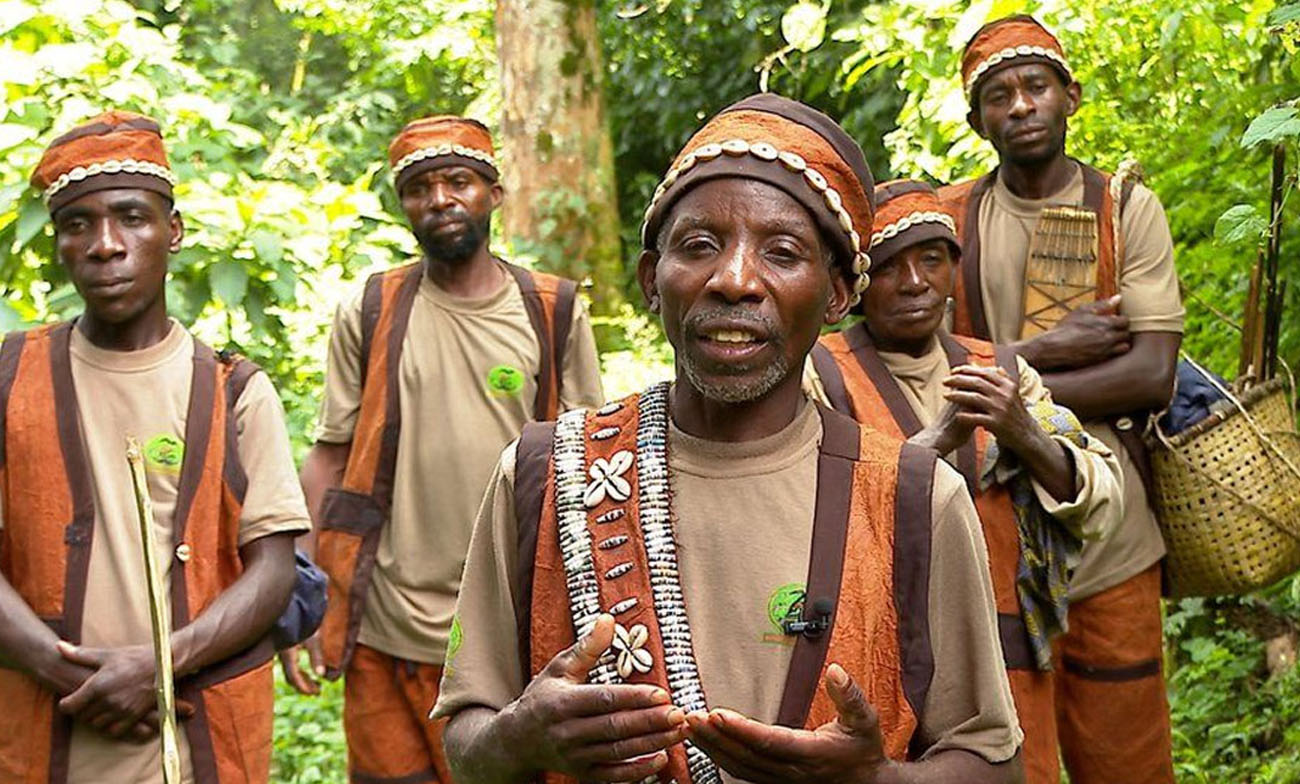A marginalized community residing just beyond the borders of the Bwindi forest and its trails offers a captivating spectacle that truly deserves personal witness. These people, known as the Batwa or Twa, are pygmies often referred to as “forest keepers” due to their extensive history of living harmoniously within the forest alongside its creatures.
The Batwa are the original inhabitants of the Bwindi forest, having called it home for more than three centuries. However, in 1991, they were forcefully displaced from the forest to support conservation efforts. This relocation led them to eke out a meager existence just outside the forest, facing the harsh realities of life with limited resources they were unaccustomed to. Regrettably, those living nearby, such as the Bafumbira and Bakiga, often label them as “uncivilized” due to their former lifestyle centered around hunting. This unjust marginalization has persisted since their eviction, leaving them without land rights and relegating them to the status of squatters on lands where their presence holds little value.

Origins of the Batwa People
Embedded in Batwa lore is a tale recounting their origins, passed down through generations by their elders. According to this legend, a man named Kihanga entrusted his three sons – Katutsi, Kahutu, and Katwa – with the task of safeguarding milk gourds to test their responsibility. The following morning, their father assessed their performance. Katutsi’s gourd remained full, Kahutu’s gourd was half-drained, and Katwa’s gourd was empty.
Kihanga’s response corresponded to their efforts: Katutsi received his father’s entire herd of cows, setting the stage for his and his descendants’ prosperity; Kahutu was endowed with seeds and a hoe, ensuring their sustenance and growth over generations; and Katwa was gifted the forest and all it contained. His survival would hinge on gathering wild fruits and hunting, a way of life he and his descendants would continue – thus establishing the Batwa’s connection with the forest.
Batwa’s Social and Economic Realities
Humble, compact dwellings dot the Batwa community, housing multiple family members within a single room. In some cases, a single room hosts over eight individuals. These homes lack amenities like mattresses and chairs, causing family members to recline on beds crafted from sisal fibers. This practice extends from fathers to children, who share these sleeping spaces.
Despite their circumstances, the Batwa exhibit exceptional warmth, extending hospitality to visitors. Social interactions revolve around activities like hunting, music, dancing, and evening storytelling sessions led by elders for younger members.
Batwa marriages often occur during their teenage years, contributing to population growth even as their available land diminishes. Many youngsters abandon formal education to contribute to their families’ daily needs, while some become local guides for tourists seeking gorilla trekking experiences.
Jobs remain elusive for the Batwa, often forcing them into low-paying casual employment. They also produce and sell clay pots to tourists, but the proceeds are inadequate for sustained well-being. Adapting to a transformed world, one in which their hunting lifestyle has been stripped away, proves challenging.
Batwa’s Spiritual Beliefs and Practices
Central to Batwa spirituality is a supreme being known as Nagaasan or Imaana, the source of wealth, food, protection, and offspring. The chameleon, revered for its ascent to the highest tree point, symbolizes proximity to the divine.
Before Christianity’s advent, the Batwa practiced their indigenous spiritual beliefs, worshipping a deity named A ‘an. Rooted in the forest, this faith persisted even as Christianity gained ground, demonstrating the community’s deep connection to their surroundings.
Upon birth, infants are placed with a bow and arrow for protection. Education differs from mainstream practices, as children learn skills like hunting and household chores from their elders rather than in formal classrooms. Extended breastfeeding serves as a method of family planning.
Monogamy is customary among the Batwa, occasionally incorporating the exchange of girls in a practice known as barter marriage. Arranged unions are common, and during barter marriages, brides face each other during ceremonies, symbolizing shared futures. Fathers introduce their daughters to the spirits’ realm post-marriage. If a woman proves barren, her husband may take another wife to secure lineage continuity.
Challenges Faced by the Batwa
Since their eviction from Bwindi, the Batwa have faced a multitude of hardships, including the loss of land without compensation. Despite living in proximity to others, their lack of land ownership has forced them into the status of perpetual squatters, unable to secure their own plots.
The Batwa’s plight is exacerbated by a dearth of medical facilities. Travelling over five kilometers for medical attention contributes to their elevated HIV prevalence, further exacerbated by limited access to medication.
Although blame is placed on the Batwa for forest degradation, historical records indicate that Bantu ethnic groups, migrating with their cattle, were responsible for forest clearing. The Batwa, in contrast, acted as stewards of the forest until the Bantu’s arrival.
Numerous organizations have rallied for the Batwa’s cause, yet their rights continue to be violated. Their cultural identity faces extinction as financial pressures drive individuals to abandon their heritage, adopting new practices to align with evolving economies. Traditional clothing, dances, customs, and songs fade, as survival becomes paramount.
This leaves the Batwa at a crossroads – a community grappling with adversity, yet fiercely determined to preserve its identity, heritage, and rightful place in a changing world.
